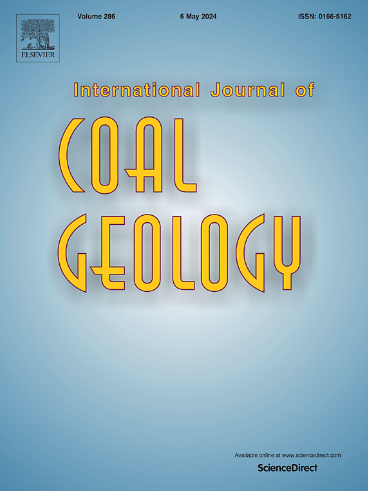Differential mineral diagenetic evolution of lacustrine shale: Implications for CO2 storage
IF 5.6
2区 工程技术
Q2 ENERGY & FUELS
引用次数: 0
Abstract
Understanding the differential diagenetic evolution of different lithofacies is essential for assessing the spatial development of shale reservoirs. These insights are crucial in predicting sealing integrity and storage capacity for sequestered CO2. In this study, we examined seven wells from the Cretaceous Qingshankou Formation in the Songliao Basin, China, with vitrinite reflectance (Ro) values ranging from 0.60 % to 1.62 %. Thin section-based petrographic observations, coupled with QEMSCAN analysis, were used to classify the different lithofacies. X-ray diffraction (XRD) analysis of clay minerals, field emission scanning electron microscope (FE-SEM), and energy-dispersive spectrum (EDS) analyses were employed to analyze the mineral textures, pore types, and diagenetic pathways. The results showed that early diagenetic mineral phases include calcite cement (1st phase), framboidal and microcrystalline pyrite, ferroan and non-ferroan dolomite. Intermediate diagenetic mineral phases were marked by illitization of smectite, chlorite formed by chloritization of smectite and alteration of K-feldspar, and the formation of authigenic albite and quartz, calcite cement (2nd phase) and ankerite. Given the higher potential reaction rate of CO2-fluid‑carbonate systems, we propose that the lithofacies dominated by carbonate minerals are not effective for CO2 storage, even in short-term. In contrast, lithofacies rich in feldspar and clay minerals are likely to be more effective for long-term CO2 storage.
湖相页岩的矿物成岩演化差异:对二氧化碳封存的影响
了解不同岩性的不同成岩演化过程对于评估页岩储层的空间发展至关重要。这些见解对于预测密封完整性和封存二氧化碳的能力至关重要。在这项研究中,我们考察了中国松辽盆地白垩系青山口地层的七口井,其玻璃光泽反射率(Ro)值从 0.60 % 到 1.62 % 不等。通过薄片岩相观察和 QEMSCAN 分析,对不同岩性进行了分类。粘土矿物的 X 射线衍射(XRD)分析、场发射扫描电子显微镜(FE-SEM)和能量色散光谱(EDS)分析被用来分析矿物纹理、孔隙类型和成岩途径。结果表明,早期成岩矿物相包括方解石胶结物(第一相)、镜铁黄铁矿和微晶黄铁矿、铁白云岩和非铁白云岩。中期成岩矿物相的特征是闪长岩的照明化、闪长岩的绿泥石化和 K 长石的蚀变,以及自生白云石和石英、方解石胶结物(第 2 相)和绿泥石的形成。鉴于二氧化碳-流体-碳酸盐系统的潜在反应速率较高,我们认为以碳酸盐矿物为主的岩相对二氧化碳封存无效,即使在短期内也是如此。相比之下,富含长石和粘土矿物的岩相可能对长期封存二氧化碳更有效。
本文章由计算机程序翻译,如有差异,请以英文原文为准。
求助全文
约1分钟内获得全文
求助全文
来源期刊

International Journal of Coal Geology
工程技术-地球科学综合
CiteScore
11.00
自引率
14.30%
发文量
145
审稿时长
38 days
期刊介绍:
The International Journal of Coal Geology deals with fundamental and applied aspects of the geology and petrology of coal, oil/gas source rocks and shale gas resources. The journal aims to advance the exploration, exploitation and utilization of these resources, and to stimulate environmental awareness as well as advancement of engineering for effective resource management.
 求助内容:
求助内容: 应助结果提醒方式:
应助结果提醒方式:


